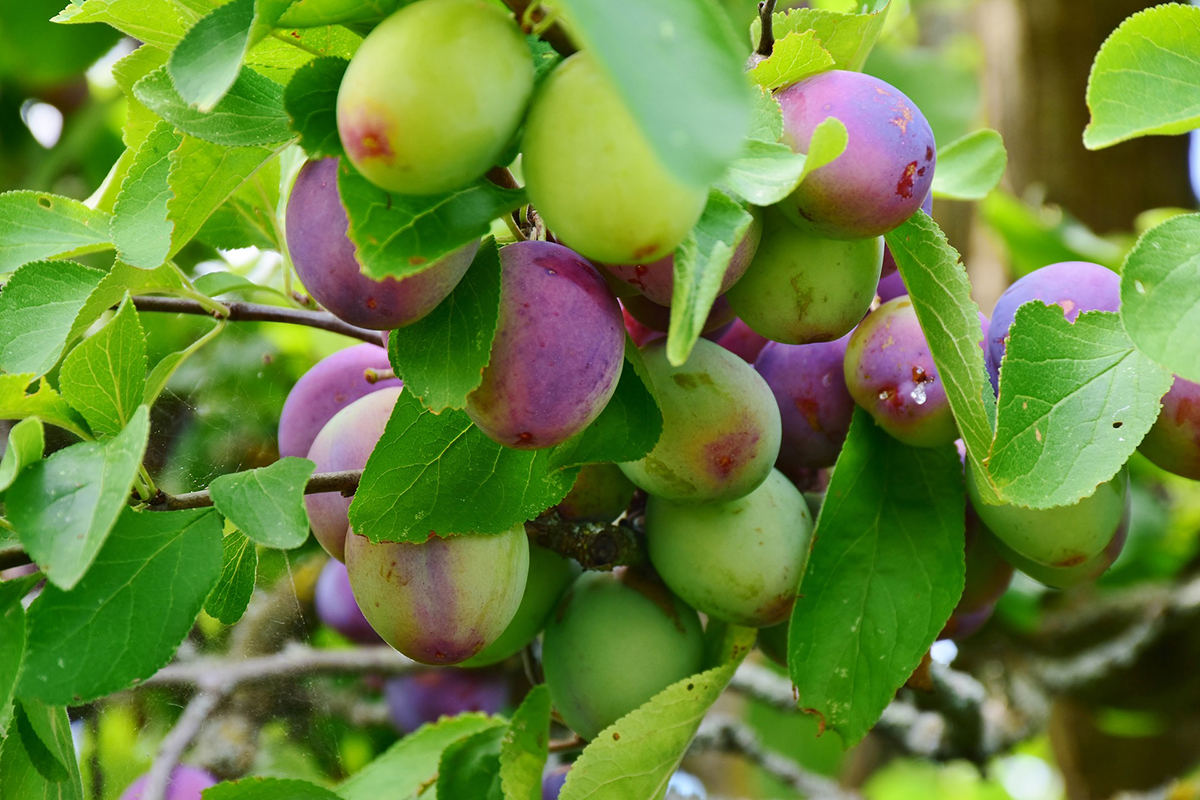
By Sarah Browning, Extension Educator, Lancaster County
To obtain quality fruit from your garden, it’s important to harvest the fruits at the right stage of maturity. Knowing when to harvest tree fruits is a challenge in judging several factors: flesh firmness, flesh color, skin color, flavor and number of days from full bloom. The ideal harvest time for apple and pear cultivars varies widely, so do some research on the cultivars in your home orchard or use the tips below to gauge the best harvest time.
APPLES
If picked prematurely, apples are likely to be sour, tough, small and poorly colored; if picked overripe, they may develop internal breakdown and store poorly.
To harvest apples correctly, you must be familiar with the term “ground color.” Ground color is the color of the fruit’s skin, aside from any reddish blush that occurs on the side of fruits in the sun. In red-fruited apples, look at the side of the apple that faces the interior of the tree.
When the ground color of red apple cultivars changes from leaf green to a lighter pale green, the apples are ready to harvest. In yellow apple cultivars, the ground color becomes golden. Mature apples with a yellowish-green background color are suitable for storage.
Apples will improve in storage if they are picked when hard but mature- i.e., showing the mature skin color but still too hard for good eating texture. Most apple cultivars have brown seeds when ready for harvest. However, seeds may become brown several weeks before proper picking maturity. When harvesting, do not remove the stems from apples that will be stored.
Fresh eating apples can be allowed to fully ripen on the tree.
PEARS
Pears do not have good eating quality if left on the tree until they are mature. They develop stone or grit cells, or a mealy texture that makes the fruit less desirable. Tree ripened fruits may also have soft, brown centers and a reduced shelf life. For good flavor and texture, pears should be picked hard and ripened after harvest.
Harvest pears while they are still quite firm (hard) but the ground color has lightened to a pale green or greenish-yellow color. Additional indications pears are ready to harvest are when the fruit stem easily separates from the branch with an upward twist of the fruit and when the lenticels (spots on fruit surface), which are white or green on immature fruits, become brown.
After harvest, any pears intended for storage should be handled as described below. Those intended for canning, preserving or fresh eating should be held at 60–65°F for 1-3 weeks, depending on the pear cultivar, until they reach a good eating texture. High temperatures (75°F and higher) after picking will cause the fruit to break down without ripening. After ripening, pears can be canned or preserved.
STORAGE OF APPLES & PEARS
Sort the immature fruits for defects, discarding any with bruises, insect or disease damage, cracks, splits or mechanical injury, then place them into cold storage at 29–31°F and 90% humidity.
Perforated plastic bags can be used to store small groups of fruit; they help maintain high humidity around the fruits but prevent the accumulation of excess moisture in the bag. Unperforated plastic bags can also be used, just don’t seal them shut. Instead, just fold the top of the bag over allowing some air movement and water evaporation from the bag. Regularly inspect stored fruits for mold or rotting fruit; discard any you find.
When stored at this temperature, apples may last for up to 6 months and pears for 2-4 months. Late-maturing apple varieties are best suited to storage.
PLUMS
Fruit color, softness and flavor are the best indicators for timing your plum harvest. Plums are ready to harvest when the flesh starts to soften and yields to gentle thumb pressure. Fruit skin color changes from green to purple, red or yellow. But the best way to tell when it’s time to harvest is to taste a few fruits!
Plums keep for 3–5 weeks if stored in the refrigerator at 32–40°F in perforated plastic bags.